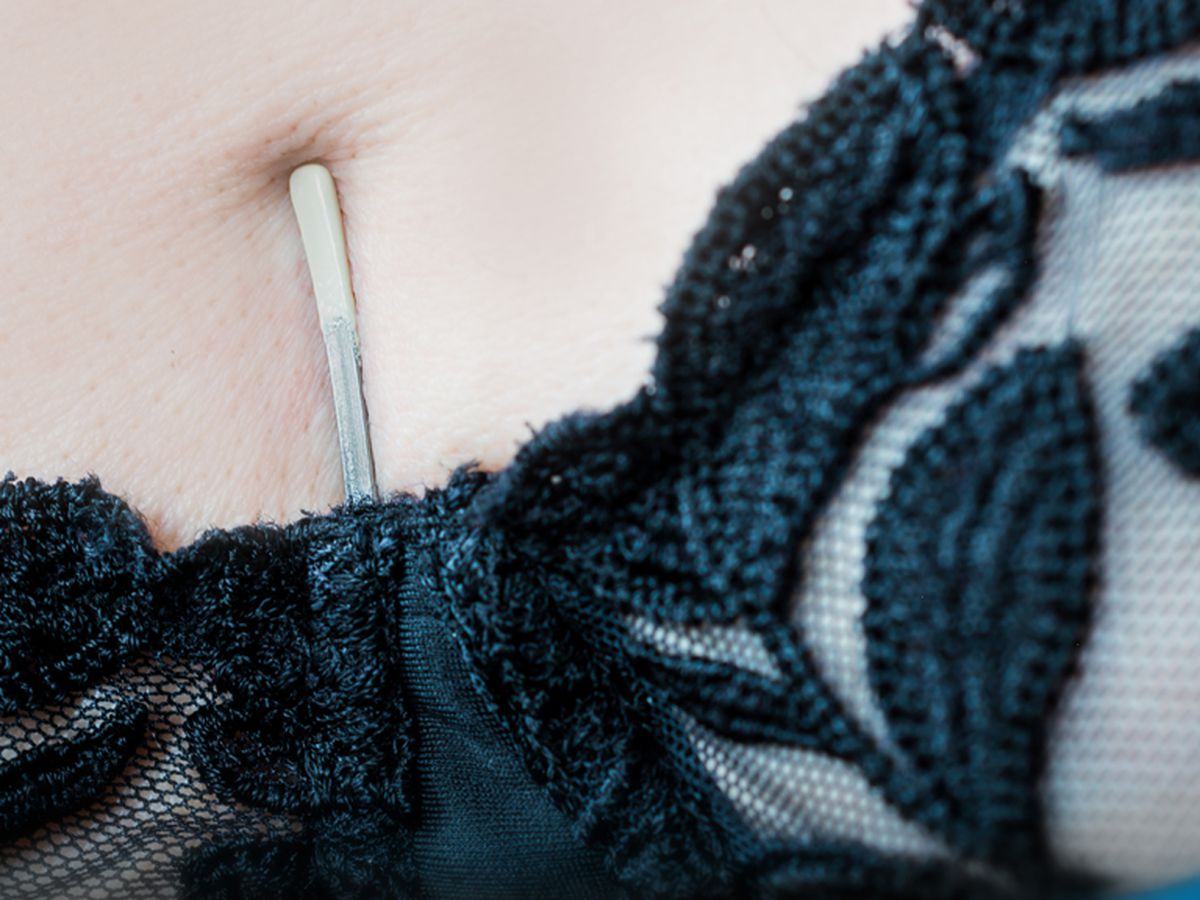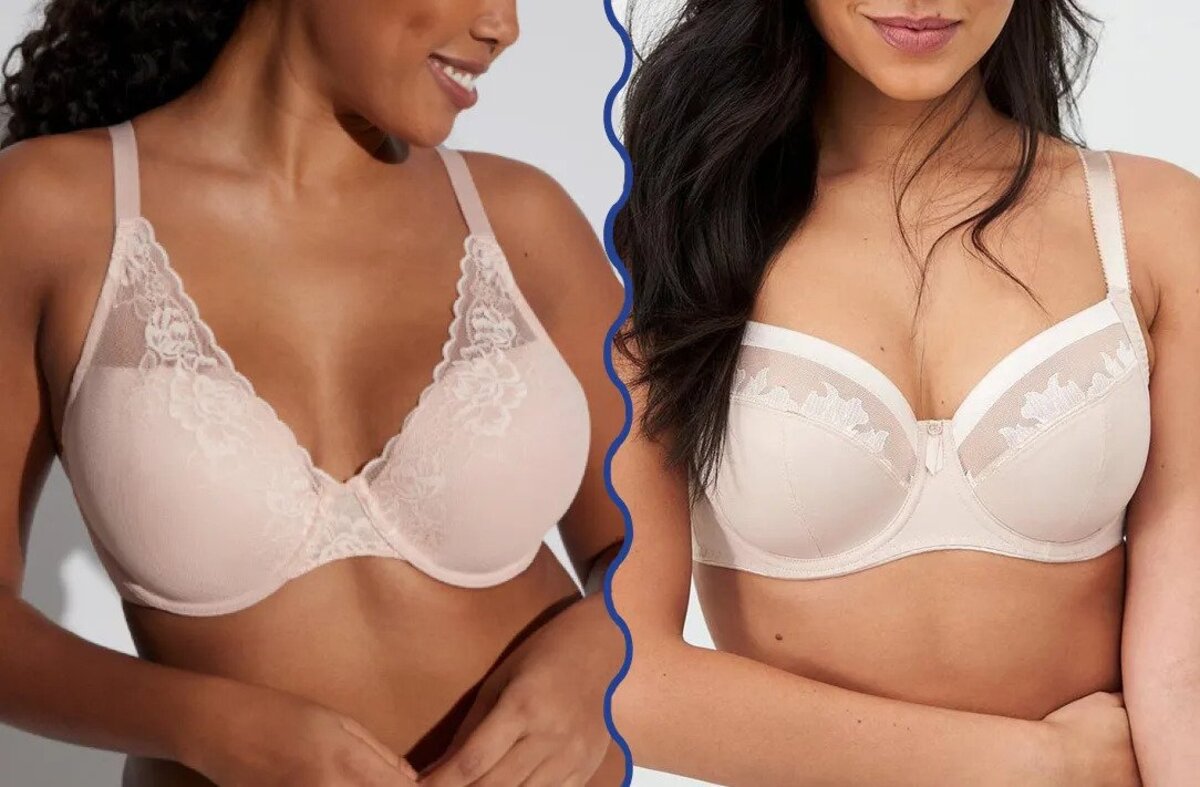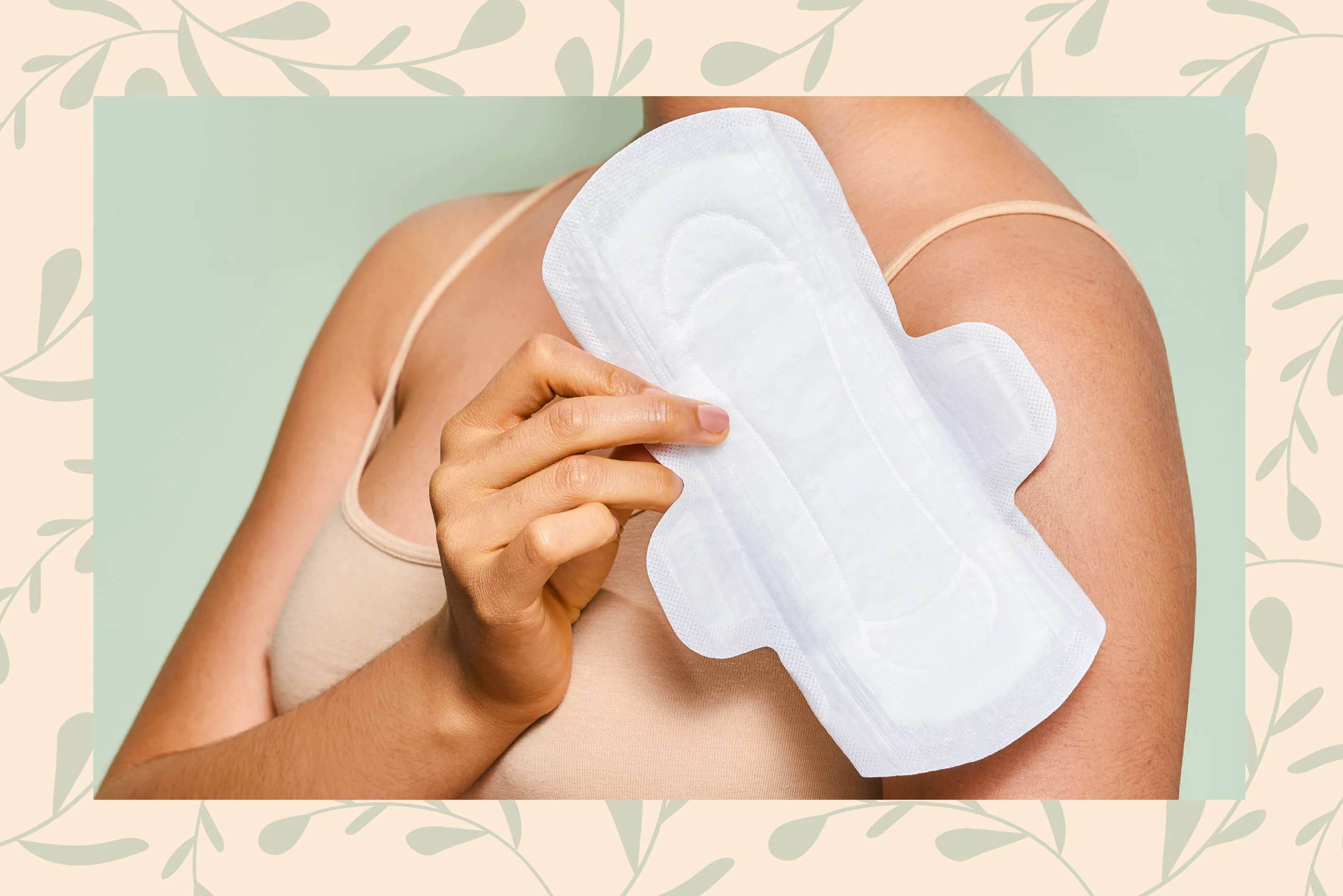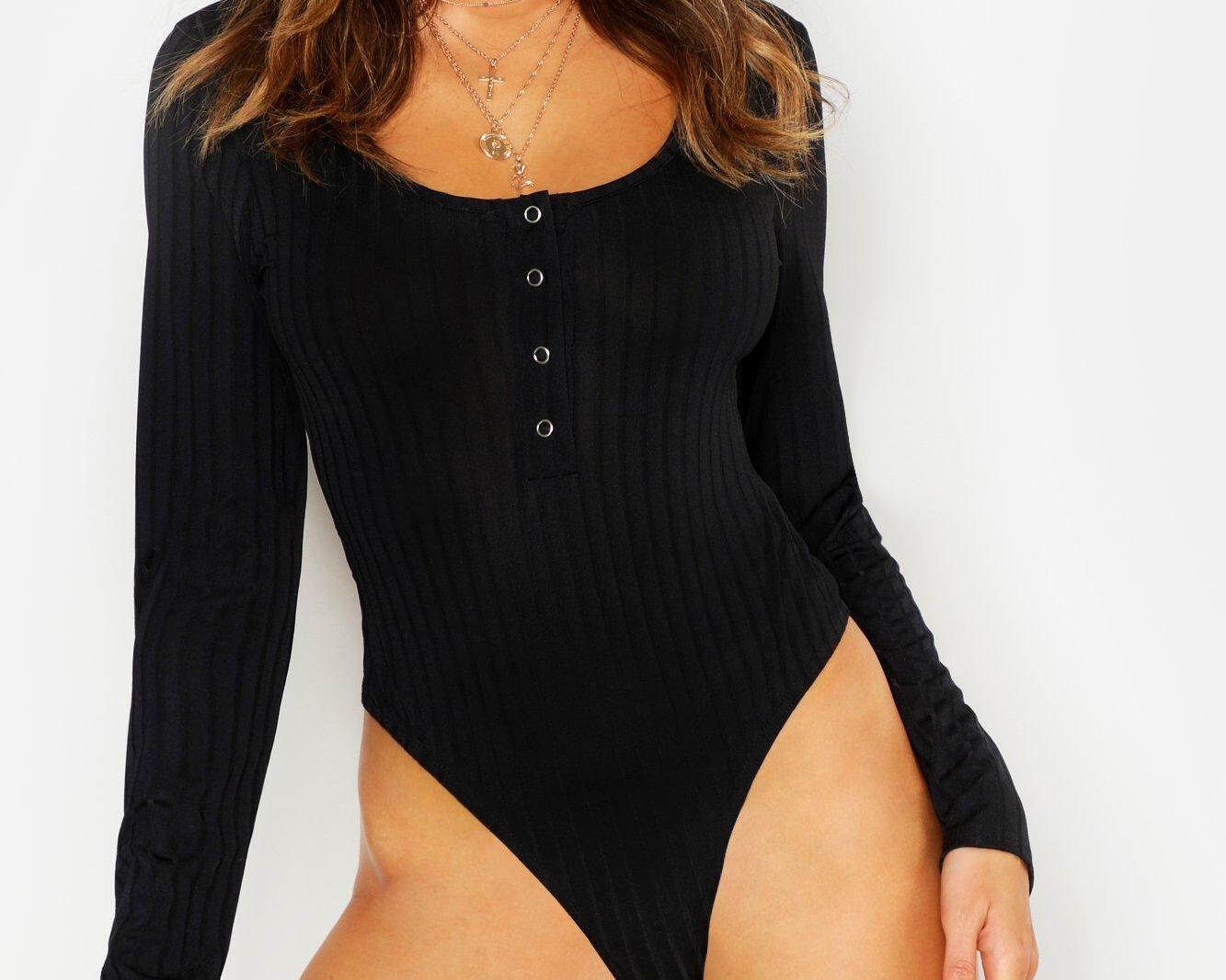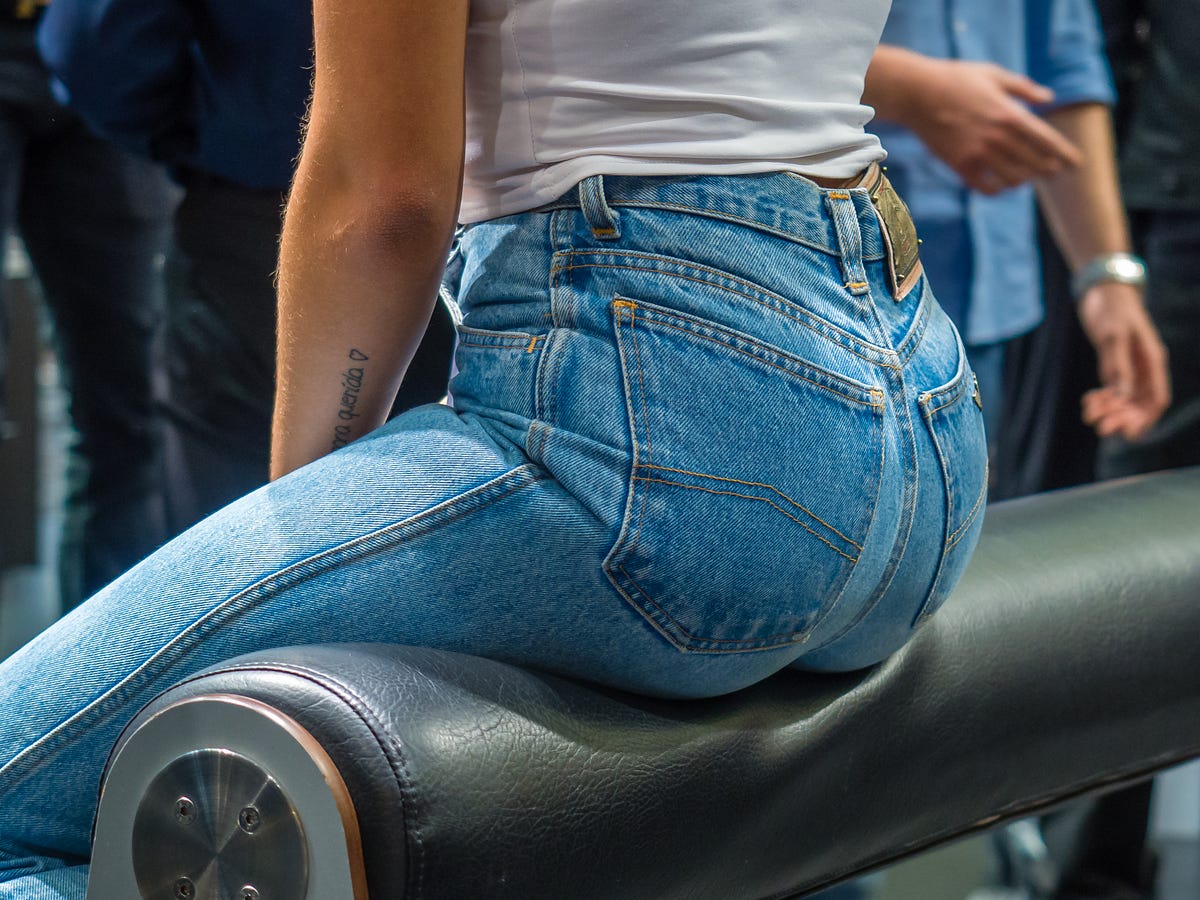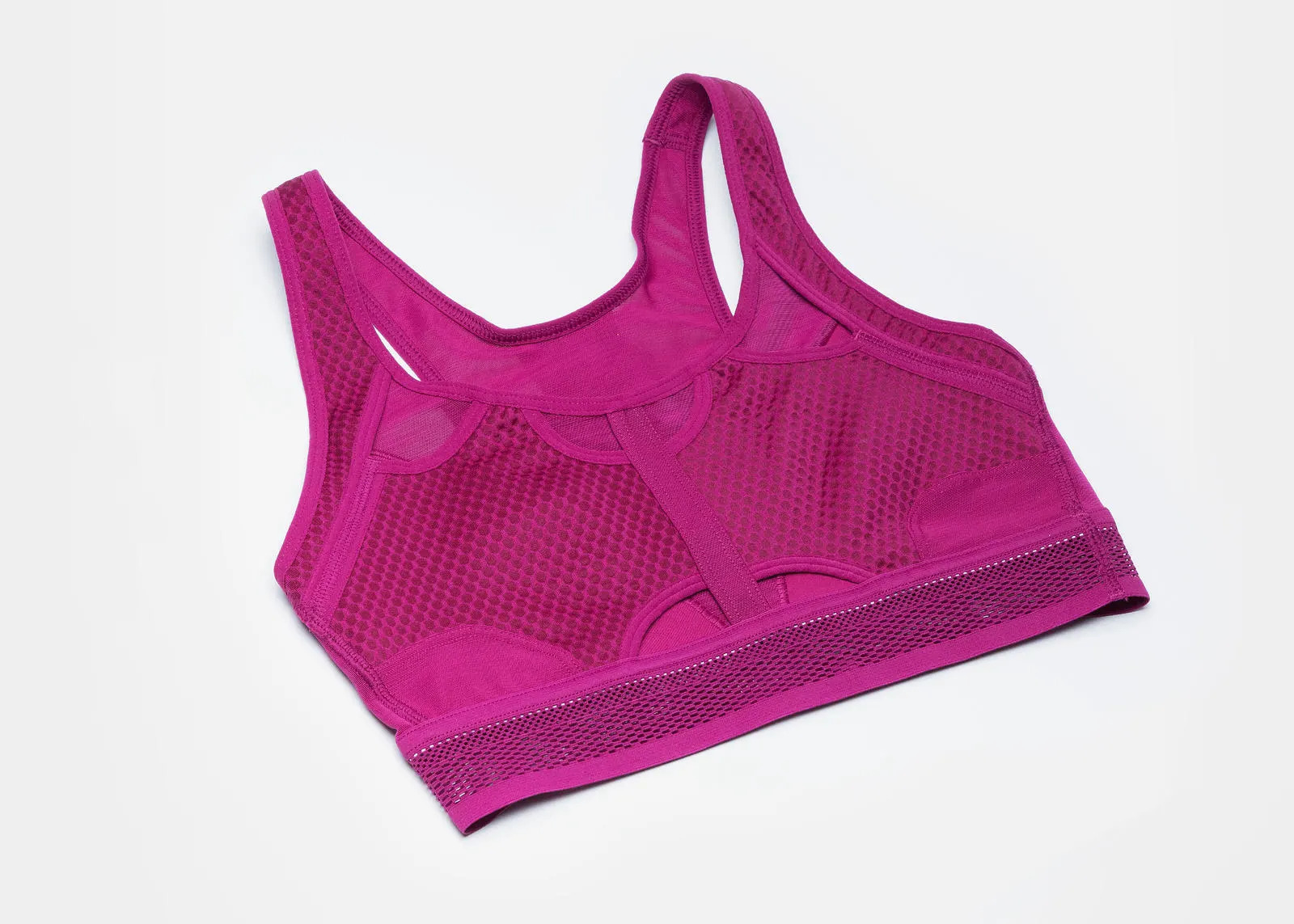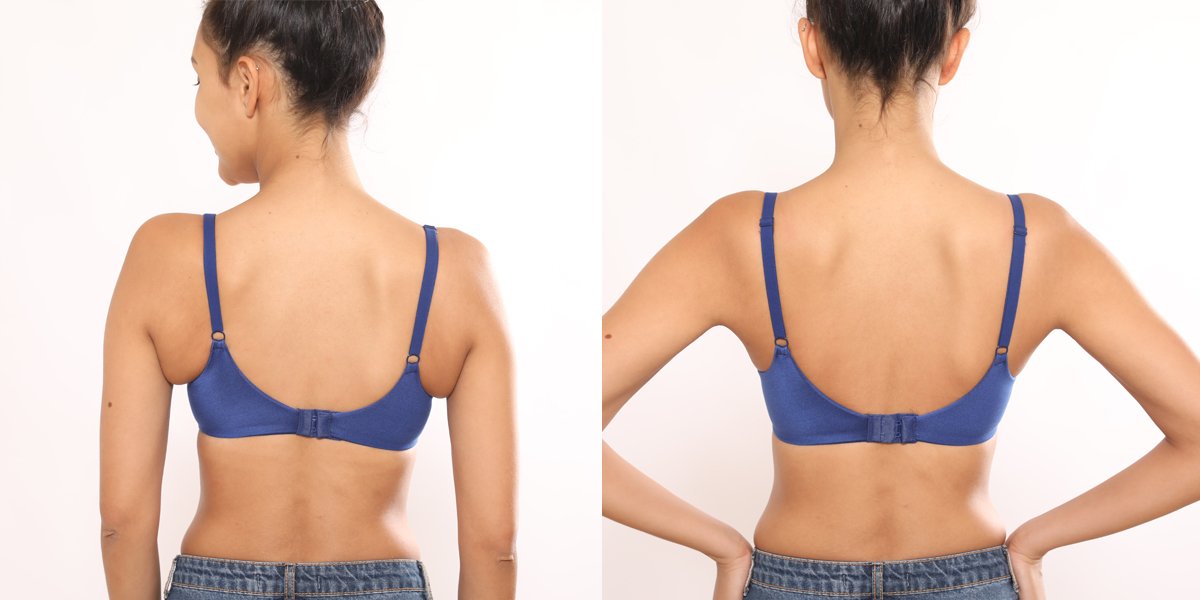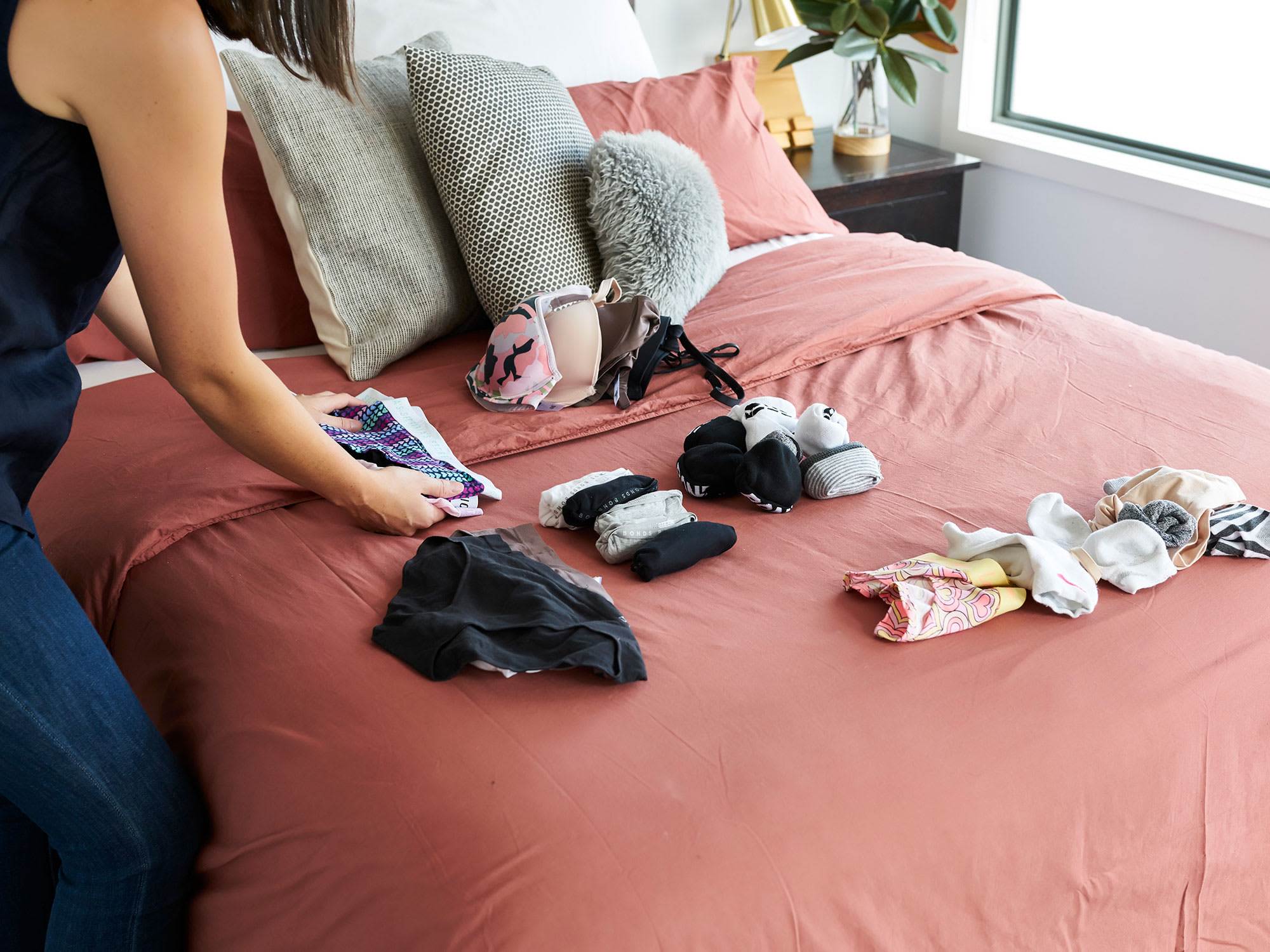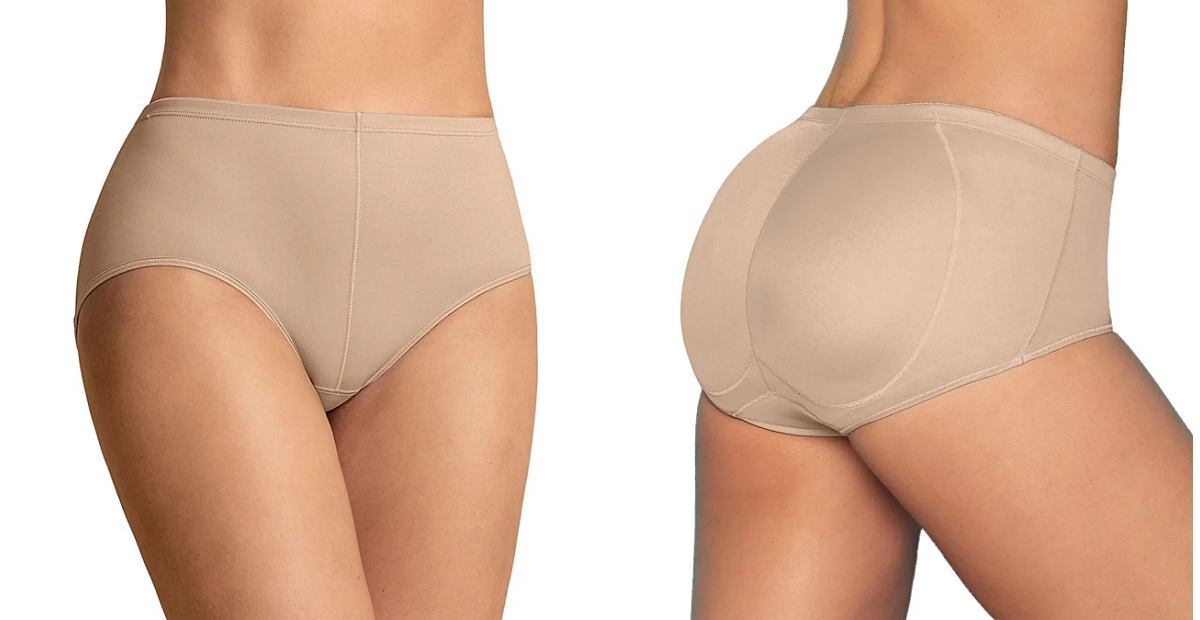Home>How-to Guides>For Women>How To Fix Swimsuit Without Padding
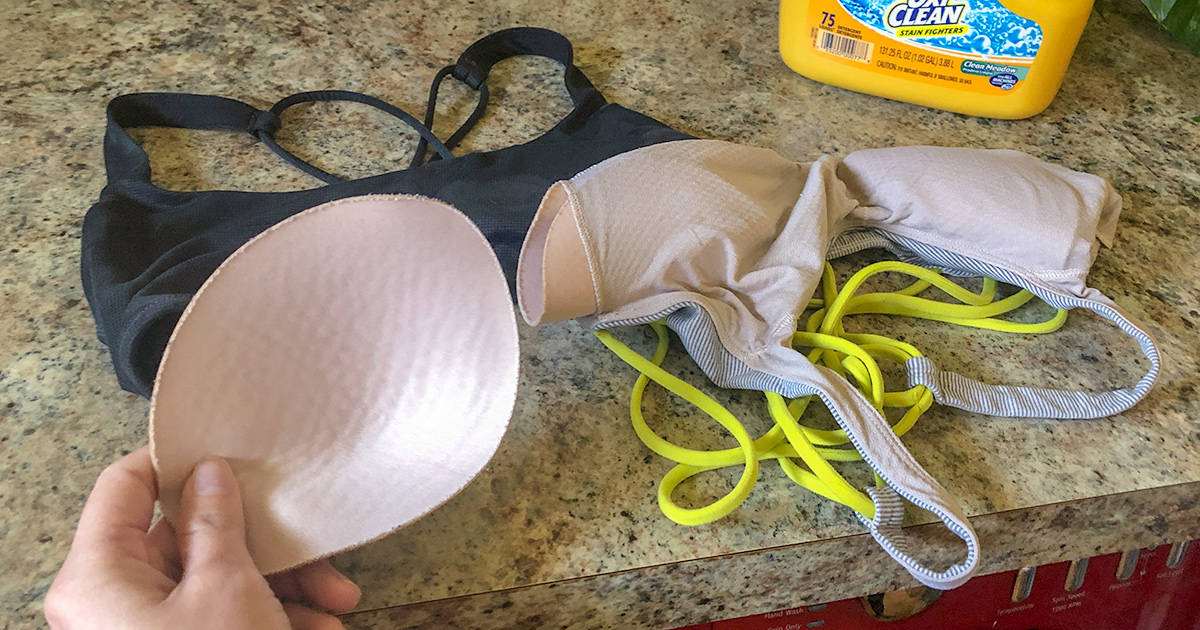

For Women
How To Fix Swimsuit Without Padding
Modified: August 5, 2023
Discover how to fix your swimsuit without padding for women with our helpful guide. Get creative tips and tricks to enhance your swimwear experience.
(Many of the links in this article redirect to a specific reviewed product. Your purchase of these products through affiliate links helps to generate commission for Under-tec.com, at no extra cost. Learn more)
Table of Contents
Introduction
Nothing can be more frustrating than finding the perfect swimsuit only to realize that it lacks the desired padding, leaving you feeling less confident and supported. Swimsuit padding is essential for providing shape, enhancing curves, and ensuring a comfortable fit. However, fear not! There are several solutions available to fix swimsuits without padding and customize them to suit your preferences.
In this article, we will explore the reasons why swimsuits may lack padding, offer guidance on choosing the right swimsuit, and provide practical tips on how to address the issue. Whether you want to add padding for extra support or simply enhance your natural shape, we’ve got you covered.
From swimsuit alterations to sewing in padding or using silicone inserts, there are various methods you can try to achieve the desired effect. No matter your skill level, there’s a solution suited for you. By following the steps outlined in this guide, you can feel more confident and comfortable in your swimsuit.
So, let’s dive into this comprehensive guide and learn how to fix swimsuits without padding, allowing you to feel fabulous and confident during your beach or poolside adventures!
Reasons for Swimsuit Padding Issue
There are several reasons why swimsuits may come without padding or with insufficient padding. Understanding these reasons can help you better address the issue:
- Design and Style: Some swimsuits, particularly certain bikini tops or one-piece styles, are intentionally designed without padding to achieve a more natural, minimalist look. These styles prioritize a sleek and streamlined appearance over added support.
- Personal Preference: Some individuals may prefer swimsuits without padding, as they find them more comfortable or prefer their natural figure. Personal preferences can vary, and if you fall into this category, you may not view the lack of padding as an issue.
- Manufacturing Variation: Occasionally, manufacturing inconsistencies or errors may result in swimsuits being produced without proper padding. This can be an unintentional oversight and may not be a deliberate choice by the brand or manufacturer.
- Customization and Versatility: Swimsuits without padding offer greater customization options. They can be easily modified to suit different preferences by allowing individuals to add or remove padding as desired. This versatility allows for more adaptive and personalized swimwear options.
- Preference for Natural Shape: Some individuals prefer the natural look of their breasts or curves without the added enhancement of padding. This preference can stem from a desire to embrace one’s body as it is or to communicate a more modest or athletic aesthetic.
Understanding these reasons can help you approach the issue of swimsuit padding thoughtfully. It’s important to assess your personal preferences, comfort levels, and desired look when deciding whether to add padding to your swimsuit. Remember, the choice is entirely up to you!
Choosing the Right Swimsuit
When it comes to fixing swimsuit padding issues, starting with the right swimsuit is key. Here are some tips to help you choose the perfect swimsuit:
- Consider Your Body Type: Understanding your body type can help you select a swimsuit that flatters your figure and provides the desired support. For example, if you have a smaller bust, consider a swimsuit with built-in padding or a push-up feature to enhance your curves.
- Look for Adjustable Features: Swimsuits with adjustable straps or ties can be beneficial, as they allow you to customize the fit and support. Look for features like adjustable back closures, halter necks, or tie-fastenings on bikini tops or one-piece swimsuits.
- Examine the Construction: Pay attention to the construction of the swimsuit. Look for supportive underwire, boning, or molded cups that provide shape and support to the bust area. Additionally, consider the fabric quality, as higher-quality materials tend to provide better support and longevity.
- Try Different Styles: Experiment with different swimsuit styles to find one that suits your preferences and body type. For example, a bikini top with a bandeau style can offer less padding but still provide a flattering look, while a one-piece with a sweetheart neckline and padded cups can give you added support.
- Seek Professional Advice: If you’re unsure about what swimsuit styles or brands to consider, seeking advice from swimwear professionals can be helpful. They can provide personalized recommendations based on your body type, preferences, and budget.
Remember, choosing the right swimsuit is an important step in ensuring you have the desired level of padding and support. By taking the time to find a swimsuit that complements your body shape and meets your comfort needs, you’ll have a solid foundation for addressing any padding issues that may arise.
Swimsuit Alterations
If you have a swimsuit that lacks the desired padding, don’t worry! Swimsuit alterations can be a game-changer. Here are a few ways you can alter your swimsuit to add or enhance padding:
- Purchasing Pad Inserts: Many stores sell pad inserts specifically designed for swimsuits. These inserts are typically made of foam or fabric and can be easily inserted into swimsuit cups or pockets. They provide an instant solution for adding padding and enhancing your bust.
- Modifying the Cups: If your swimsuit has removable cups, you can replace them with padded cups to add more support and volume. You can find padded cups in fabric and craft stores or online. Simply remove the existing cups, sew the new padded ones in place, and voila!
- Padding with Bra Inserts: If you have old bras lying around, you can repurpose them by cutting out the padded cups and inserting them into your swimsuit. Make sure to choose bras made of material suitable for swimwear, such as nylon or polyester.
- Layering with a Bralette: For added padding and support, you can wear a bralette underneath your swimsuit. Look for bralettes with removable padding to achieve the desired level of lift and enhance your natural shape. This method works best with bikini tops or swimsuits with an open-back design.
- Consulting a Professional: If you’re uncertain about making alterations yourself, consider consulting a professional tailor or seamstress. They have the expertise to customize your swimsuit to suit your specific needs and can offer more advanced alteration options if necessary.
Remember to choose the alteration method that best aligns with your comfort level and the swimsuit style you have. With a little creativity and some simple modifications, you can transform your swimsuit and enjoy the perfect amount of padding and support.
Sewing in Padding
If you’re skilled with a needle and thread, sewing in padding can be an effective and long-lasting solution for fixing swimsuit padding issues. Here’s how you can do it:
- Choose Your Padding: Select a suitable type of padding that is specifically designed for swimwear. Look for lightweight, quick-drying materials that won’t absorb excess water. Foam or fabric padding inserts work well for this purpose.
- Set Up Your Sewing Station: Prepare a clean, well-lit area for your sewing project. Gather your swimsuit, padding, sewing needles, matching thread, and scissors. Make sure you have a sewing machine or a sturdy hand-sewing needle if you prefer to sew by hand.
- Remove Existing Cups (If Applicable): If your swimsuit already has cups, carefully remove them using small scissors or seam rippers. Be cautious not to cut or damage the fabric of the swimsuit. If your swimsuit doesn’t have cups, you can skip this step.
- Measure and Cut: Place your swimsuit on a flat surface and position the padding where you want it to sit. Use pins to secure the padding in place, ensuring it aligns with your bust area. Trim any excess padding, leaving a small border around the edges for sewing.
- Sew the Padding: Using a sewing machine or a strong hand-sewing needle, sew the padding onto the inside of the swimsuit. Sew along the edges of the padding, creating a secure stitch. Make sure your stitches are small and tight to prevent the padding from shifting or coming loose.
- Test the Fit: Once you’ve sewn in the padding, try on the swimsuit to check the fit and comfort. Make any necessary adjustments by trimming excess fabric or padding if needed. Ensure that the padding sits naturally and provides the desired shape and support.
Sewing in padding may require some basic sewing skills, but with patience and practice, you can achieve professional-looking results. Be sure to use the appropriate materials and take your time to ensure a secure and comfortable fit. By sewing in padding, you can customize your swimsuit to your exact specifications, guaranteeing the perfect amount of padding and support.
Using Silicone Inserts
If you’re looking for a convenient and non-permanent solution to add padding to your swimsuit, silicone inserts can be a great option. Here’s how you can use silicone inserts:
- Choose the Right Inserts: Select silicone inserts that are specifically designed for swimwear. These inserts are typically soft, flexible, and waterproof, making them perfect for use in swimsuits. They come in different shapes and sizes to suit different cup sizes and preferences.
- Insert the Silicone Pads: If your swimsuit has pockets or removable cups, insert the silicone pads into the designated compartments. Make sure the pads are positioned evenly and cover the desired area to provide the desired shape and lift. Adjust the placement as necessary to achieve the desired look.
- Secure the Inserts: If your swimsuit doesn’t have pockets or removable cups, you can still use silicone inserts. Simply place the inserts inside the cups or desired areas of the swimsuit and adjust them for optimal positioning. The natural stickiness of the silicone material will help keep them in place during wear.
- Test the Fit: Once the silicone inserts are in place, try on the swimsuit to ensure they provide the desired shape and support. You can make any necessary adjustments by repositioning or resizing the inserts. Remember to adjust both sides evenly for a symmetrical look.
- Remove and Clean: After use, remove the silicone inserts from the swimsuit. Rinse them with warm water and mild soap, then pat them dry with a towel. Make sure they’re completely dry before storing them to prevent any mold or bacteria growth.
- Alternative Options: If you don’t have silicone inserts, you can also use adhesive bra inserts or bra enhancers made of similar materials as a substitute. They can provide similar padding and shaping effects to silicone inserts.
Using silicone inserts is a quick and easy way to add padding to your swimsuit without making any permanent alterations. They offer versatility, as they can be transferred between different swimsuits and adjusted to achieve the desired level of padding and support. Whether you want a subtle enhancement or a more dramatic lift, silicone inserts can give you the confidence boost you’re looking for in your swimwear.
Enhancing the Natural Shape
If you prefer to enhance your natural shape rather than adding external padding, there are several strategies you can employ. Here are some tips to help you achieve a flattering and confident look:
- Opt for Ruching or Gathering: Look for swimsuits with ruching or gathering details around the bust area. These design elements create texture and visually enhance the shape, providing a flattering look without the need for additional padding.
- Choose Supportive Fabrics: Fabrics with a strong hold can provide natural lift and support. Look for swimsuits made from supportive materials like spandex or nylon blends. These fabrics can help accentuate your natural curves and provide a flattering silhouette.
- Consider Underwire or Boning: Swimsuits with built-in underwire or boning can provide structure and shape to the bust area. These features offer support and lift, helping to enhance your natural shape without relying on padding.
- Embrace Padding-Free Styles: Opt for swimsuit styles that are intentionally designed without padding. These styles, such as sporty one-pieces or minimalistic bikinis, embrace the natural shape of your bust and provide a more relaxed and athletic look.
- Experiment with Necklines and Cutouts: Different necklines, such as sweetheart, halter, or high-neck styles, can enhance your natural shape by drawing attention to your bust area. Additionally, strategically placed cutouts or mesh panels can provide visual interest and emphasize your natural curves.
- Accessories and Cover-ups: Consider accessorizing with statement jewelry, sarongs, or cover-ups. These items can draw attention to other areas of your body and create a balanced look, allowing your natural shape to be the focal point.
By embracing and enhancing your natural shape, you can feel confident and comfortable in your swimsuit. Celebrate your unique body and choose swimwear that accentuates your assets. Remember, the most important thing is to feel good in what you’re wearing, and enhancing your natural shape can help you achieve that with ease.
Conclusion
Fixing swimsuits without padding is not as daunting as it may initially seem. By understanding the reasons behind the padding issue and exploring various solutions, you can confidently address the problem and customize your swimwear to your liking.
When choosing a swimsuit, consider factors such as your body type, adjustable features, construction, and personal preferences. These aspects will help you select a swimsuit that provides the desired level of padding and support.
If your swimsuit lacks padding, there are several options available. You can explore swimsuit alterations, such as sewing in padding, using pad inserts, or repurposing old bras. Additionally, silicone inserts offer a non-permanent solution that is easy to use and transfer across different swimsuits.
Alternatively, you may choose to enhance your natural shape by opting for swimsuits with detailing, supportive fabrics, underwire or boning, and flattering necklines or cutouts. Embracing and enhancing your natural shape can be a confident and empowering choice.
Remember, the goal is to feel comfortable and confident in your swimsuit. Whether you choose to add padding or embrace your natural shape, the solution is personal and unique to you. Experiment, have fun, and find the method that makes you feel your best.
Now that you have a comprehensive understanding of how to fix swimsuits without padding, you can confidently dive into your beach or pool adventures and enjoy your swimwear with the perfect level of comfort and support.
